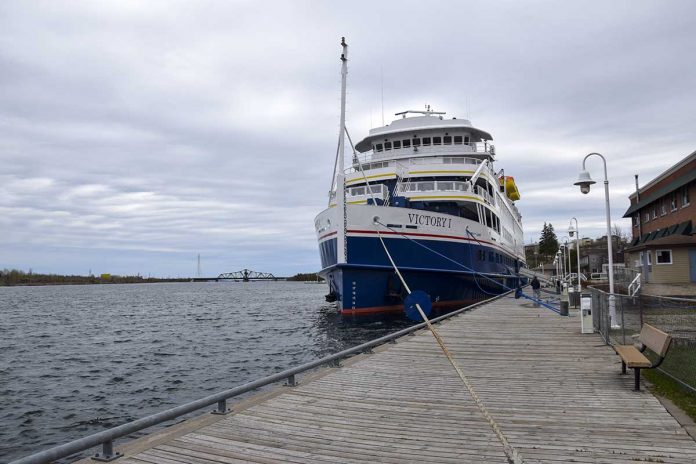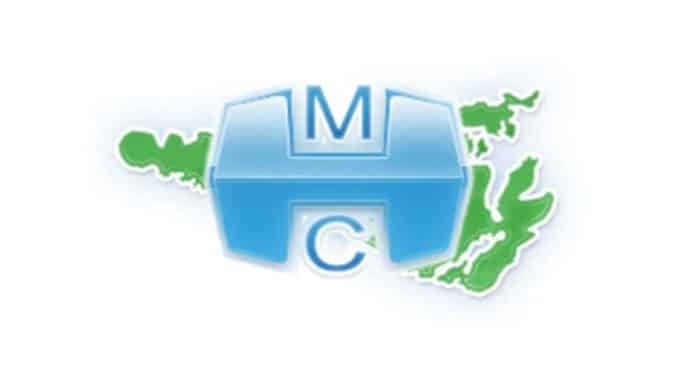GORE BAY—From youngsters to adults, the Manitoulin KAIROS group, along with the Lyons Memorial United Church in Gore Bay, hosted the memorial of children’s shoes that was initiated by KAIROS in June to commemorate the 215 Indigenous children whose unmarked graves were found on the grounds of the Kamloops, British Columbia residential school in May. As has been reported since, many more children’s unmarked graves have been found at several other residential schools in other areas of Canada, including the most recent 182 more burial sites found on June 30 at a site near the St. Eugene’s Mission School near Cranbrook, British Columbia which was operated by the Catholic church from 1912 until the early 1970s.
“We had a few people out, not that many, there was one family who left behind brand new children’s shoes,” stated Reverend Mercedes Hughes, of Lyons Memorial United Church. “In that regard the day was a success,” she said, noting “we were pushing the education element of this whole issue during the day.”
Rev. Hughes explained, “it was two-fold. We wanted to provide education and awareness and what Chief Patsy Corbiere had said (in supporting Indigenous people reeling from the news of the unmarked graves at residential schools) and this was a good opportunity for us as a church to host the shoes display, as it give a visual element to the horrific things that took place at residential schools.”
For Steve Chovaz, the issue of the horrific treatment that Indigenous children had to endure at residential schools is very poignant and close to home for him. “My ex-inlaws were both survivors of residential schools 35 years ago, but no one talked about what happened in these schools.”
“I have two beautiful Native daughters who both live in Whitefish River First Nation,” said Mr. Chovaz. “I think a day like this for KAIROS and the church to provide information is really important for knowledge and education on why many Indigenous people have and are dealing with this trauma. My ex-wife was one of those suffering from the trauma. But when she and I were married she didn’t talk much about it.”
“After my ex-wife and I divorced, you start to think and realize some of the things that she did that I didn’t understand at the time, did make sense,” said Mr. Chovaz. “That is why Indigenous people want to be heard and want the truth to be told.”
“It is very important that people understand all the trauma that First Nations people were going through then and that they are still feeling the effects of,” said Mr. Chovaz. “Awareness and education is the key.”
Mr. Chovaz said over the years his wife Maria became very involved in KAIROS, “and then I got involved. Maria has a tremendous relationship with my kids”
“I think people are starting to understand why Indigenous people are still dealing with the trauma of residential schools,” said Mr. Chovaz. “All that Indigenous people want is to be heard and the truth be told.”
Little Current United Church Rev. Whitney Bruno has a six-year-old daughter, Selena. “It has been hard to explain what is going on right now in Canada. I’ve been using the book ‘When We Were Alone’ to teach her. One of the stories in the book is about an Indigenous girl speaking with her grandmother and asking questions such as ‘why do you wear your hair so long’ and the grandmother explaining to the young girl that when she was in a residential school she had to wear her hair short, and lost her language, culture and traditional ways.”
“I’ve been using that book to teach Selena,” said Rev. Bruno, “and reassure her that this type of thing is not going to happen to her, but that there are still people hurting from it and what has happened to them in the past.”
Mary Buie, of Kagawong, was at the gathering on July 1 at the United Church in Gore Bay. She said the visual impact of the children’s shoes “provides a poignant, emotional connection.”
Dr. Kate Mackeracher, one of the founders of the Manitoulin KAIROS group said, “KAIROS is a Canada-wide social justice organization focusing on Indigenous rights, originally founded by members of churches involved in the residential school system when they started to realize what they had done. Today, it includes people of all faiths. We started the chapter on the Island in the fall of 2020. I can’t speak for other people, but as a Canadian and raised in the Anglican Church I’m ashamed at what we have done and we need to find a new way of going forward.”
Truth and Reconciliation Commissioner “Murray Sinclair said, ‘education got us into this mess, and education will get us out of it’,” stated Dr. Mackeracher.
Rev. Hughes said, “I wanted to host the KAIROS shoe memorial here as it was in Little Current. I wanted to be able to host the children’s shoes, and it seemed ideal to do this July 1. It’s something we need to do as a church as well. Anglican and United Churches had residential schools, but we really don’t know much about the residential schools. The question is was it that people did not want to know or whether things were being hidden from them?”
Mr. Mackeracher said that KAIROS is hoping to host a blanket exercise on the Island this fall, COVID permitting.
Rev. Hughes said the shoes on display at the Lyons Memorial United Church would be going back to Little Current on Friday and will be there indefinitely. The KAIROS group is hoping to bring the blanket exercises to communities around Manitoulin later this year.
The blankets represent the lands of what is now Canada, and the distinct cultures and nations on those lands. Participants represent the Indigenous First Peoples, who move onto the blankets, and move back in time to the arrival of Europeans.
With the help of a narrator and a script, participants spend about an hour re-enacting the history of treaty-making, colonization and resistance in the country that became Canada.
Participants learn about 500 years of colonization in this interactive activity, where they take the role of an Indigenous person and go through history. The start off on these blankets, which represent the land, and through colonization, and through the exercise, you see how the blankets are taken away and how the land becomes smaller.





